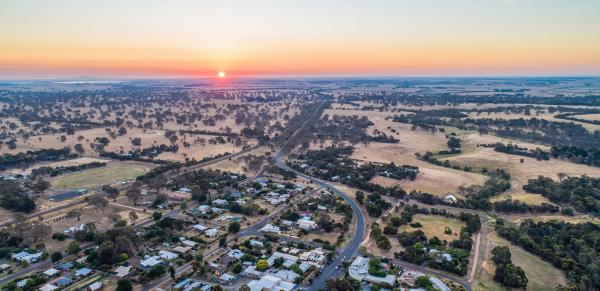There is no safe level of air pollution. Air quality is increasingly recognised as a threat to the health and wellbeing of communities, in Australia and around the world.
Project summary
Emerging smart technologies are enabling local governments to monitor and respond to local air quality issues in new ways. Until recently, there was no clear support or guidance relating to the use of these technologies. To address this gap, the NSW Department of Planning and Environment (which manages the state-wide network of regulatory air quality monitoring stations), commissioned the Operational Network of Air Quality Impact Resources (OPENAIR) project, with support from the NSW Smart Places Acceleration Fund.
OPENAIR brought together a coalition of five universities (led by UTS’s Institute for Sustainable Futures), six NSW local governments (Tweed Shire; Muswellbrook; Newcastle; Lake Macquarie; Parramatta; and Sutherland Shire), and the NSW Smart Sensing Network. The project developed a comprehensive suite of best practice resources on all aspects of smart low-cost air quality monitoring. To understand the realities of working with this technology, the project team worked directly with Council practitioners, ensuring that resources were practical and relevant to users on the ground. These world-leading resources are now available on the NSW Government's Air Quality Hub, serving as a foundation for widespread impact on air quality and urban heat issues across Australia. OPENAIR has now won a 2024 Banksia Award for and 2024 IoT Research Award.
In addition to development of extensive best practice resources, OPENAIR trialled the sharing and harmonisation of near-real-time air quality data from multiple local government monitoring networks into a single state government-managed platform. This highly innovative proof of concept can be understood as a blueprint for scalable intergovernmental smart city data sharing in the coming years – something that is vital for effective collective action on the most pressing environmental and social urban challenges of our time.
Project timeframe
2022 - 2023
SDG targets addressed by this project
Partnerships for the goals:
17.17 – Encourage and promote effective public, public-private and civil society partnerships, building on the experience and resourcing strategies of partnerships Data, monitoring and accountability. Encourage and promote effective public, public-private and civil society partnerships, building on the experience and resourcing strategies of partnerships Data, monitoring and accountability.
Good health and well-being:
3.9 - By 2030, substantially reduce the number of deaths and illnesses from hazardous chemicals and air, water and soil pollution and contamination
Industry, Innovation & Infrastructure:
9.c - Significantly increase access to information and communications technology and strive to provide universal and affordable access to the Internet in least developed countries by 2020
Sustainable cities and communities:
11.6 - By 2030, reduce the adverse per capita environmental impact of cities, including by paying special attention to air quality and municipal and other waste management.
-
Key collaborators
ISF
-
-
Key collaborators
- NSW Smart Sensing Network (NSSN)
- UTS, University of Sydney, Western Sydney University, UNSW, Australian National University
- 6 Councils including: Sutherland Shire Council, Tweed Shire Council, Lake Macquarie Council, Muswellbrook Shire Council, Newcastle City Council, City of Parramatta Council.





